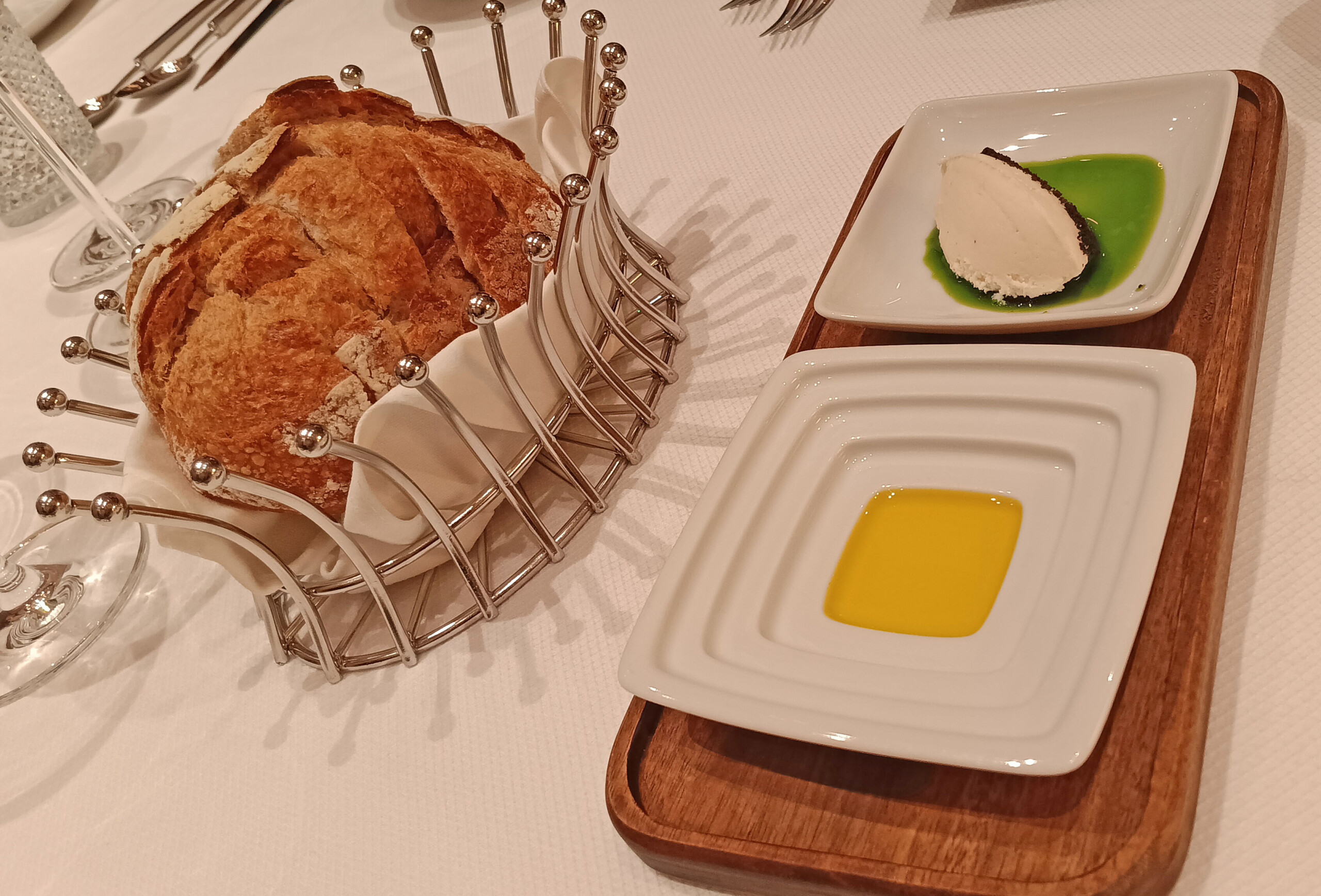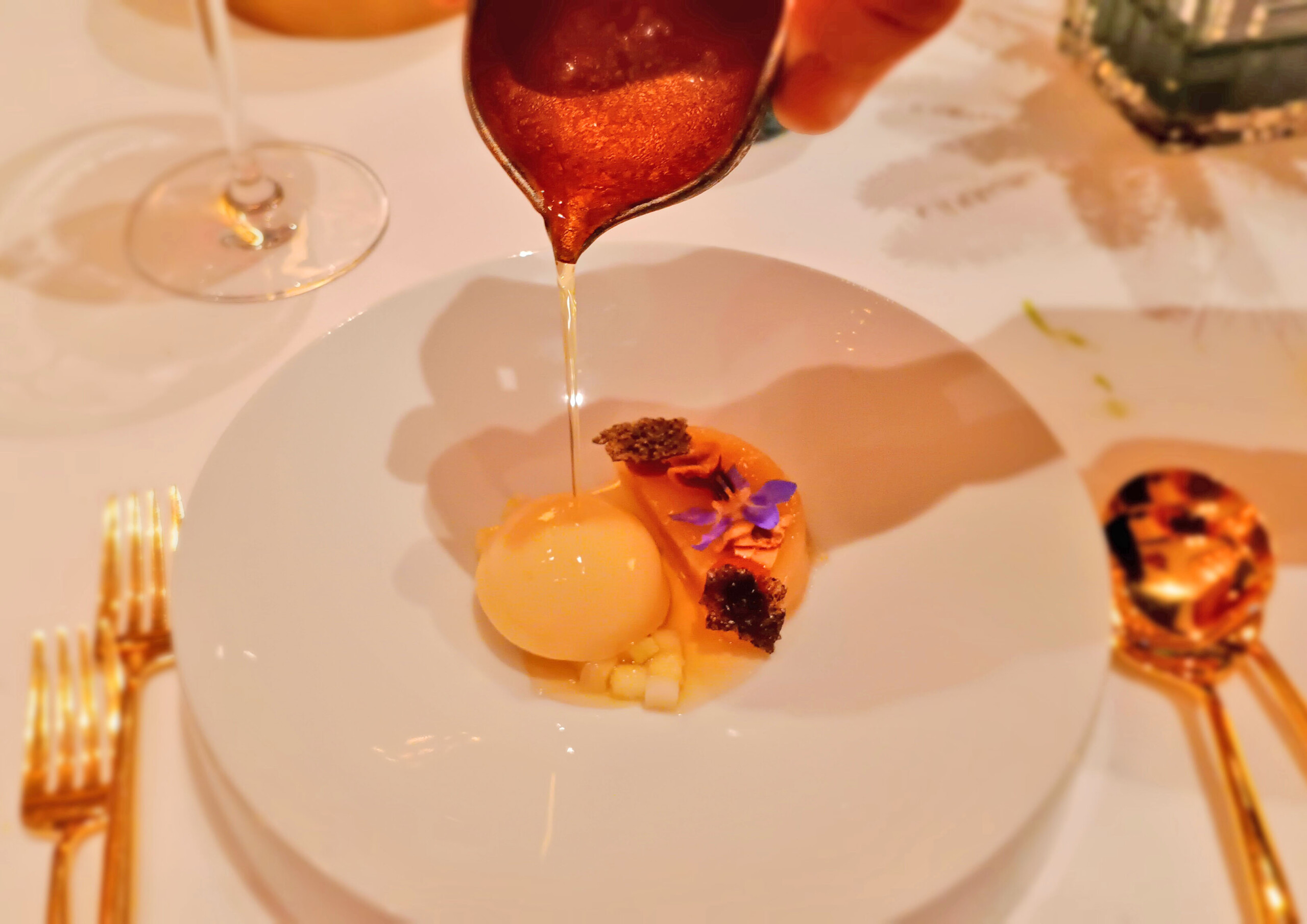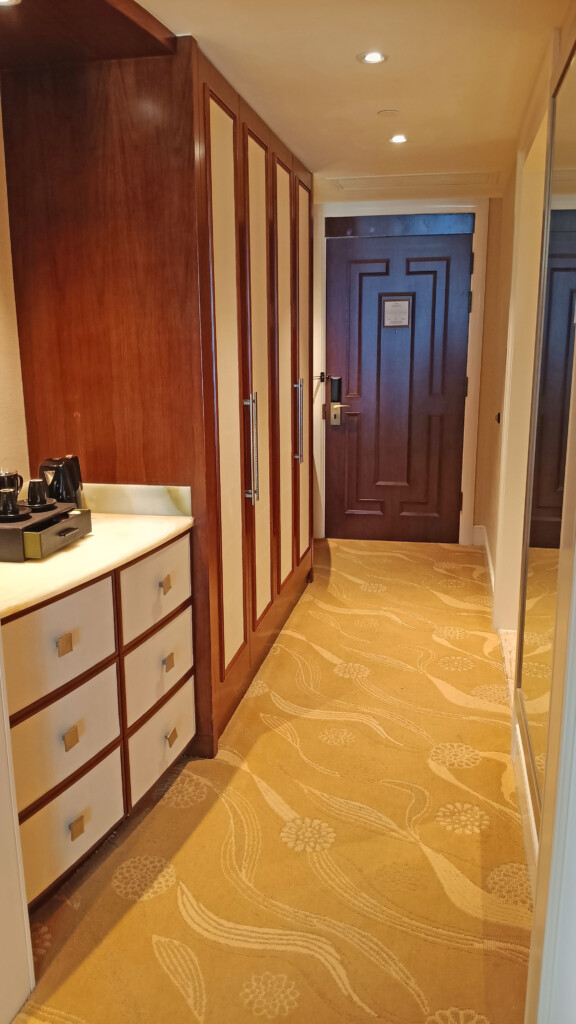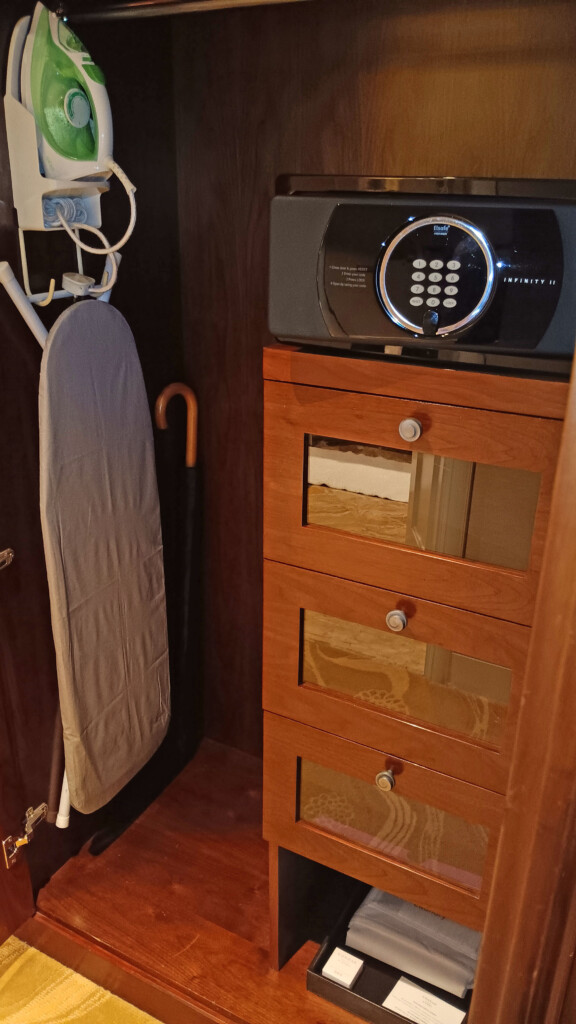Disclaimer: I was invited by Sands Macao to enjoy one night at Conrad Macao, as well as dine at the Portuguese restaurant Chiado, and the Chinese restaurant Jiang Nan.
Following a nice Cantonese meal earlier this year at The Venetian Macao, I was looking forward to seeing what else the massive Sands Macao development — centered on the Cotai Strip — had in store for my taste buds.
But first, let’s have a brief look at my room at the Conrad Macao, and its buffet restaurant Churchill’s Table, shared with The Londoner Macao, another Sands property.
Speaking of The Londoner, Conrad Macao’s front desk is nearly opposite that of the former. It’s easy to get lost in the sea of dining and shopping available in the same complex, so if you come upon this scene…

then you’re very close to check-in, and the Conrad Macao’s elevators.

As for the room, very rarely do I not have bone to pick with the layout. Surprisingly, my room was one of the better ones I’ve had in a long time.
I suppose bedside power points (outlets) were the biggest issue, but beyond that, the a/c worked great, it had good Cotai Strip views, and the robes were choice.
As you probably noticed above, there’s a pool — well, a bunch of pools — a sauna, and a 24-hour gym (obviously not pictured).
The breakfast buffet is served at Churchill’s Table, a polished-looking spot that offered a pretty good mix of Western and Cantonese dishes.
Even at opening time, the dining room had a fair crowd that day, so I didn’t get to take many photos. However, as usual I appreciated the raw vegetables, grilled tomatoes and bacon, and dim sum.
O.K., time for the two starring restaurants, Jiang Nan and Chiado.
Jiang Nan
I’m going to start with Jiang Nan, where I took lunch.
Firstly, the word Jiangnan refers to a region somewhere “south of the {Yangtze/Chang} River.” To simplify things, let’s say that Shanghai is the largest city within Jiangnan, but the term also includes cities in nearby provinces, cities such as Anqing, Suzhou, and Hangzhou.
To what exactly Jiangnan fare refers, I’m still a greenhorn. I get the impression that vinegar, thick soy sauce, and cooking wine play a big role, as do sweeter dishes. Considering that the area is home to Zhenjiang vinegar, and Shaoxing wine, it makes sense.

Even though I really only ever want something sweet if it’s for dessert, owing to my near-zero experience with this region’s food, I played along. Thus, for my 0 to 60 reintroduction to Jiangnan cooking, I ordered the lunch degustation menu:

First up was an haute “bento” (in Chinese, 便当 biàndāng).

Although they all tended towards sweet, there was still quite a variety of flavors here. Items ranged from pumpkin and crab, to braised eggplant, and duck with garlic chives.

Still learning how to get a good soup shot. Anyway, this light consommé helped provide a nice bridge between courses.

As did these lightly-seasoned, wonderfully crunchy cabbage mustard leaves (Chinese broccoli).
At Jiang Nan, there are occasionally brief performances of guzheng/古筝 (an ancient string instrument similar to a zither). Whereas some of the other patrons were rudely chatting away, I was quite taken the soothing music. Have a listen:
Did you think that was all of the food?

I’m not the biggest fan of duck, nor being unaware of what “treasures” might be lurking inside of said duck. A heavier dish, with sweetened soy sauce taking center stage.

Seafood is where a restaurant can easily win me over.
As an example, this delicately steamed croaker, made very slightly salty with the addition of chicken oil, was a big hit.

As were these river shrimp…possibly my favorite course.
Again, they were lightly sautéed, and had a nice crunch due to the snap peas.
What’s a gorgon fruit, you might ask? It comes from a type of water lily, famous around Suzhou city.

Beef dumpling. I could have eaten a bucket of these…with Zhenjiang vinegar, of course.

For dessert, a classic almond “milk” pudding. Silky and smooth, and always a welcome treat after any Chinese feast.
Service was very attentive; in particular, I’d like to shout out Helen, with whom I chatted about regional Chinese cuisines, and her hometown of Chaozhou.
Chiado

Located at The Londoner Macao, Chiado, named for a Lisbon neighborhood, was excellent from start to finish. It helped that waitstaff were on their game the entire time.
Also, Henrique Sá Pessoa and Rui Paula the two affable Portuguese chefs leading the limited-time Four-Hands Dinner event, joined my media colleagues and I for a toast.


I have scarcely enjoyed a better slice of bread than Chiado’s sourdough. Portuguese olive oil and goat cheese combined to hit it even further out of the park.


What we have here is a candidate for my top five best meals of 2024– squid tagliatelle (long, flat ribbon pasta) carbonara.
I usually find carbonara to be too rich, but this was of peerless quality. Using one of my favorite seafood’s as pasta sealed the deal.

I’m sorry about borrowing the cliché, but the langoustine truly melted-in-the-mouth.
If that’s not the impression you want to get from shellfish, move on with your day. But the consistency and prior course had me thinking about langoustine pasta….

Looks like we have competition for top dishes of 2024.
Whereas I could have had thirds of the champagne and kale sauce, I really had to admire the adeptness used to sear the sea bass, and then serve it at just the right temperature.
Bravo.

Eggplant and fish? Why have I never asked for this before???

As much as I was wanting to try the pork shoulder, those clams stole the show.

Quite an unusual combination for dessert, no? Well, if only for the olive.
But the light saltiness of the olive made a solid accompaniment for the overall sweetness of the pear.

Cauliflower, you don’t say?
I do say, and its creaminess nicely meshed with the natural sweetness of the rice.
And that Port wine, wow. It took me back to my one visit to Oporto in 2007. Fantastic.
Speaking of Port…

Know about the older method of opening a bottle of Port?
Heat up some tongs, then do thus:
Thanks again, Sands Macao for a delicious getaway!




























Leave a Reply